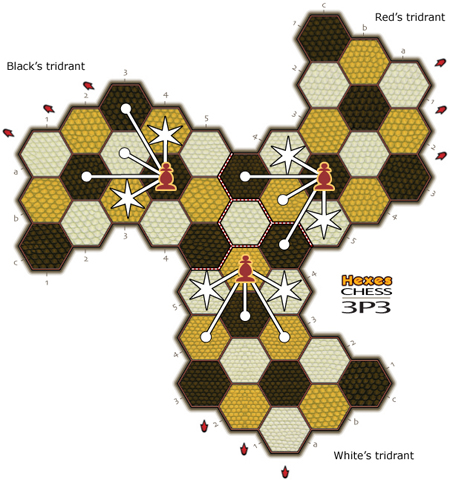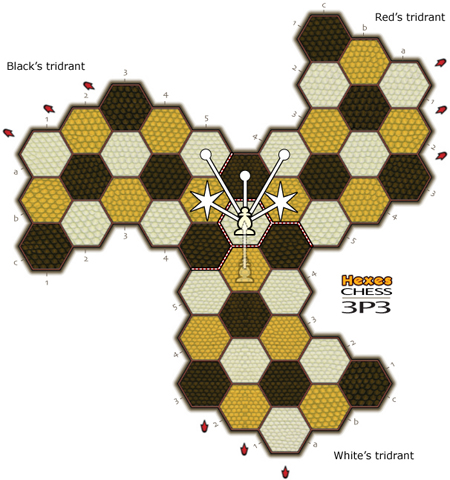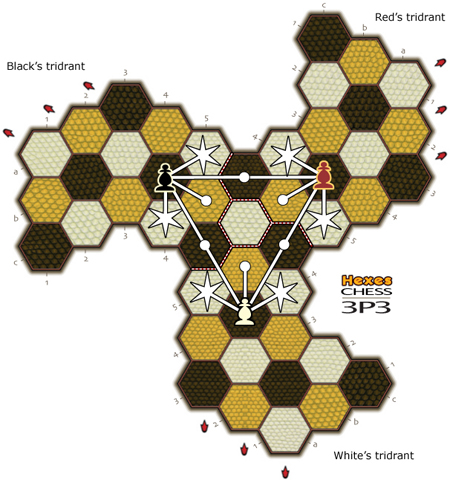The PawnPawns travel one hex per move in any of the three forwardmost directions, but they capture hard-forward-left and hard-forward right. (See below.) Note that "forward" for each tridrant is indicated by the red arrows. A dashed white line marks the boundary separating the tridrants. The sand-colored hex at the center of the chess board does not belong to a tridrant.

Above-left: A red pawn has entered Black's tridrant. Above-center: A red pawn has entered White's tridrant. .

Each player begins the game with three pawns. A pawn that reaches the far end of an opponent's tridrant is promoted to a piece of higher value. |
|

